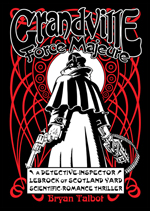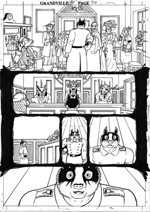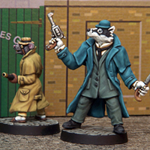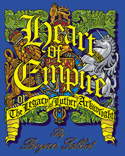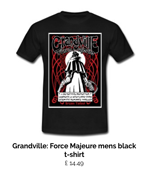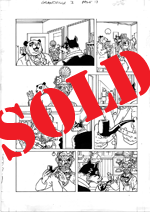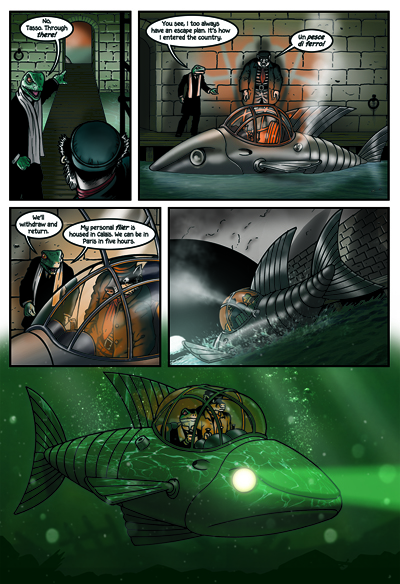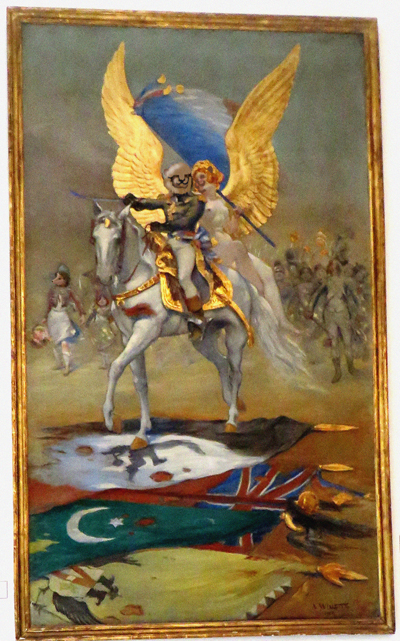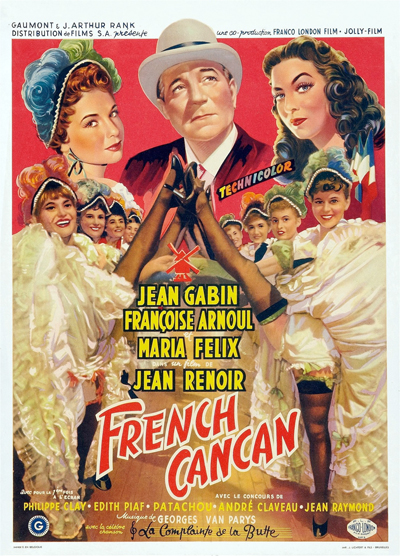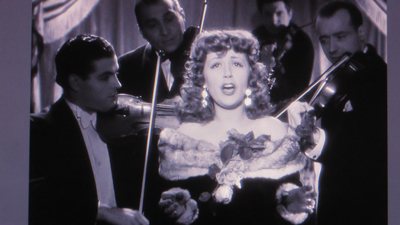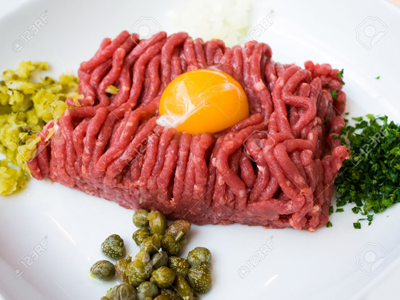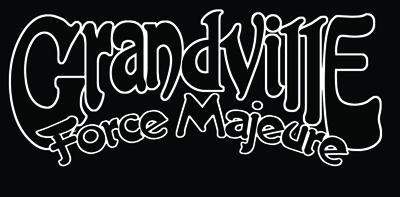
Grandville Force Majeure
annotations - batch 7
This is similar in concept to the Directors Cut of Heart of Empire that Bryan and myself created: it is an attempt to answer the eternal "where do you get your ideas from?" question, and a way to showcase the influences and images that went into the creation of Grandville.
We are publishing updates to this page every Sunday and we will cover the entire Grandville series: we have already completed the annotations for Grandville, Grandville Mon Amour, Grandville Bête Noire and Grandville Noël - and in case you missed them, check out the first batch of Grandville Force Majeure annotations.
Start reading the Grandville Force Majeure annotations below, or jump straight to page 103, page 107, page 109, page 110, page 111, page 112, page 113 and page 116.
Page 103
“Un pesce di ferro!”: Italian for “an iron fish”. The Iron Fish was an adventure strip in the U.K. children’s comic The Beano, first appearing 1n 1949, originally drawn by Jack Glass, and running sporadically for decades.
The last panel is a reference to the cover of the 1944 Tintin album Le Trésor de Rackham le Rouge (Red Rackham’s Treasure) by Hérge.
Page107
Panel 1
You can hardly see it here, but the painting on the wall in the background is adapted from one of Napoleon triumphant, symbolically riding over the flags of his vanquished enemies, including the union flag of Britain, seated next to the goddess of Victory. It didn’t happen on our world, but it happened in the world of Grandville! I don’t know the title of the piece, nor the artist or the date it was painted. It’s based on a photo I took of it at the Musée Carnavalet in Paris.
Panel 7 and next page: this short Italian conversation was translated by our friend, the comic expert and mainstay of the Italian comic magazine Fumettomania, Mario Benenati. Mario, along with Cesare Giombetti and Aberta Conte, are translating these very annotations and has started posting them on the Fumettomania site.
The conversation goes as follows:
Koenig: Where are you from?
Tasso (Showing photo): I’m from here, Loppeglia.
Koenig: Where?
Tasso: Tuscany, near Lucca.
The beautiful walled town of Lucca is where Lucca Comics the annual festival of comics and games is held every year. It’s been running in one form or other since 1965 and is the second largest comics festival in the world, after Tokyo’s Comiket. I’ve been several times over the years and am supposed to be there again next October with Mary to promote the forthcoming Italian editions of Dotter of Her Father’s Eyes and The Red Virgin. It’s a hard life.
Page 109
Panel 1
The building is 36, Quai des Orfèvres, the Paris Préfecture, the police headquarters on the Right Bank of the Seine, previously seen in Mon Amour.
Panel 4
“La Broyeuse” means “the grinder”.
Page 110
The beer cellar gaffer is a creature known as a Jackson’s chameleon or Kikuyu three-horned chameleon.
Page 111
Panel 7
“…the password…swordfish”: From the Marx Brothers film Horsefeathers.
Page 112
Panel 1
The interior décor of the club is a fantasy version of the real Hell Club (see page 84 annotations). To the far right of the panel, there’s a design based on a detail from The Garden of Earthly Delights, painted by Hieronymus Bosch between 1490 and 1510.
I couldn’t have a series set in imaginary Belle Epoch without at least one scene that included the cancan. If you want to see something that captures the spirit of the time, see the Jean Renoir movie French Cancan (1955), starring the brilliant Jean Gabin, or the original Moulin Rouge (1952) directed by John Huston.
Panel 2
The chameleon’s companion is a crocodile skink.
Page 113
The femme fatale singer in the nightclub is a trope in several 1940s and 1950s American detective films, later evoked by David Lynch in Blue Velvet (1986).
“Edith Sparrow”: from Edith Piaf (1915 -1963).
“Piaf”, French slang for “sparrow” was originally a nickname that became her first stage name, La Môme Piaf (“the sparrow kid”). Starting as a Pigalle street singer, she became a world-famous star, with songs such as Je ne Regrette Rien and La Vie en Rose, approximated here. The lyrics are not the original ones, as they’ve been translated and reworded to avoid copyright infringement, but they can be sung to the tune.
Edith Sparrow’s hand gestures are based on habitual ones made by Piaf in her performances.
Panel 3
Could one of these rat violinists be Roderick? I hint at this on page 144, when Roderick makes it plain that he’s been keeping a close eye on LeBrock.
The image of four violinists playing around a night club singer is inspired by a scene of Suzy Delair singing Danse Avec Moi in the 1947 noir crime film Quai des Orfèvres, directed by Henri-George Clouzot, sometimes known as The French Hitchcock. Quai des Orfèvres is the location of the Paris Police headquarters (see page 109 annotations).
Panel 6
LeBrock pretending to get dead drunk is probably inspired by the similar ruse used by the Man With No Name in Fistful of Dollars (1964), and is foreshadowed in the murder mystery recounted by LeBrock earlier in the book.
Page 116
Panel 1
Steak Tartare, i.e. raw meat, is sometimes served like this. Seemed a suitable meal for a tyrannosaurus.
Now see batch 8 of the Grandville Force Majeure annotations.

